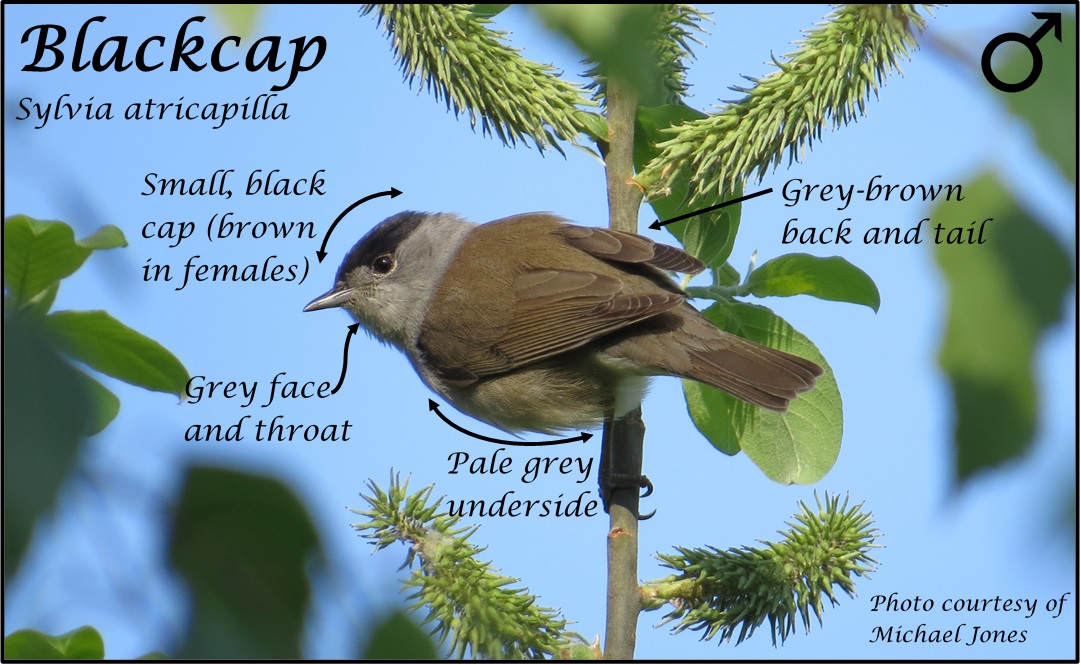Birding beginnings: Blackcaps and chestnutcaps
Say what you see…
I’m always grateful when the name of an animal describes exactly what you can expect. The male blackcap does just that, proudly wearing a black ‘cap’ at the top of its head. The female blackcap doesn’t quite follow this rule… but I suppose ‘Chestnutcap’ wasn’t as catchy!
The blackcap is a common summer migrant which comes primarily from Germany and north-east Europe. They are typically found in woodland and tall scrub, so now could be your last opportunity to get a good look at them whilst the trees are still bare. Otherwise you’ll be relying on their song, one which I have found trickier to pick up than most other birds. The blackcap’s song starts off with short disjointed notes, before a more consistent, warbling melody comes together.
In terms of identification features, it’s an easy one! The blackcap is an incredibly plain, grey bird (besides the cap). It could be confused with the similarly coloured marsh and willow tits, however these birds show a small bib on their face, a feature which is absent on the blackcap.
A new resident population?
Whilst blackcaps are known to be summer visitors, an increasing number are now spending their winters in the UK. This increase is likely because of the greater food abundance, mostly from bird feeders! Evidence suggests that blackcaps wintering in Britain have adapted to a more general diet, possessing narrower and longer beaks to exploit this food supply.
Want to get involved?
The British Trust of Ornithology are studying how human activities are shaping the migratory pattern of the blackcap. If you do see a blackcap during the winter, do get involved and record details of the sighting. These records can be submitted at https://app.bto.org/birdtrack/main/data-home.jsp.
Warden Nick

